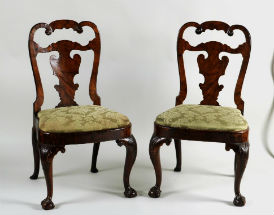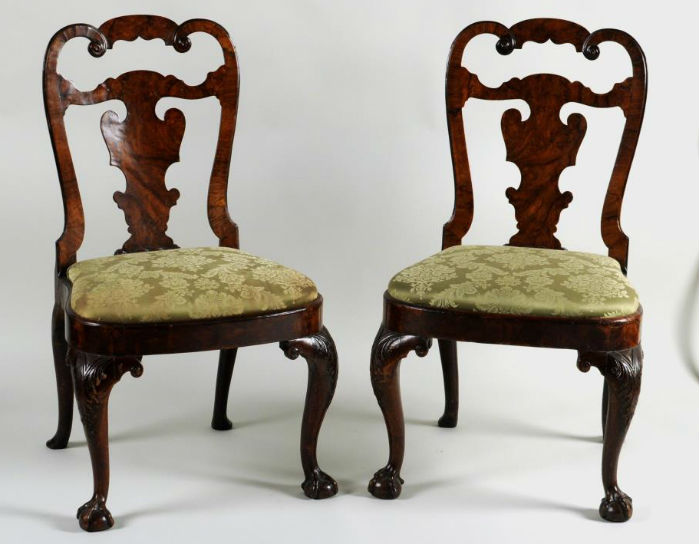
NEW YORK – The Queen Anne style of furniture, decorative arts and architecture – characterized by limited and restrained decoration – was evolving during the reign of England’s Queen Anne (1702-1718), although the actual name “Queen Anne” was first applied to the style more than a century after it was fashionable. It really began to take shape during the reign of William III (1689-1702), but the term mainly describes decorative styles dating from the mid-1720s to about 1760.
The Queen Anne style can be applied many ways, but for our purposes, this story will be limited to furniture since that’s what fans are mostly drawn to. In contrast to its predecessor, William & Mary furniture, which was marked by straight lines and the use of curves for decoration, Queen Anne furniture used C-scroll, S-scrolls and ogee (S-curve) shapes in the structure of the furniture itself. Queen Anne was also typically smaller, lighter and more comfortable than its forebears.
Ornamentation is minimal in Queen Anne furniture, the most recognizable element of which is the cabriole leg, influenced by the designs of the French cabinetmaker Andre-Charles Boulle and the Rococo style from the French court of Louis XV. Curving shapes and cushioned seats were common in the pieces of the day, such as wingback chairs and secretary desk-bookcases. Other elements of the style included pad feet and an emphasis on line and form rather than ornament.

“In England during the 17th, 18th and 19th centuries, furniture styles and designs were evocative of and subtle reflections of the political, social, economic and political climate and mores at the time,” said Tom Schwenke of Schwenke Auctioneers in Woodbury, Conn. “For Americans, we might analogize by reference to the dress standards between the Victorian prim and proper and the loose and flamboyant flapper style of the early 1900s.”
Names for the styles in England were assigned much later, Schwenke said, by referencing the style by the name of the monarch in reign at the time; hence we have furniture styles named William & Mary, Queen Anne, George I, II and III (collectively Georgian), Regency (the Prince Regent) and Victorian (Queen Victoria). “The evolution of the Queen Anne style in England did not precisely coincide with Queen Anne’s reign. We generally assign the dating from 1740-65.”
Schwenke continued, “But the style reflected a departure from the square and well-defined lines of the William & Mary period designs, which used curves simply for decoration, whereas the Queen Anne forms usually incorporated curves as part of the basic form, whether as crests, arms, legs, feet or wings, and multiple curves (cymas) either intersecting or abutting were used. The intention was in part to allow the beauty and grain of the wood to show more prominently.”
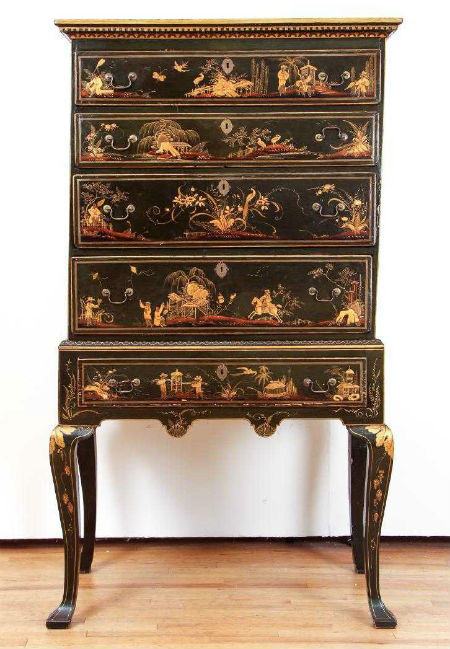
The popularity in the mid-18th century, therefore, derived from its currency and relevancy at the time, not from any particular popular appreciation of the design, form or ornament as such,” Schwenke said. “Today’s connoisseurs, however, appreciate and prize the Queen Anne-style pieces because of their essential beauty, simplicity, flowing and organic composition, and for the intrinsic historical value and assigned market value as maintained by the collector community.”
“With regard to the ever popular and oh-so-elegant Queen Anne – or late Baroque, if we’re being academic – period in furniture design, I believe the key to understanding any type of style, whether it be architecture, fashion or furniture design, is to look at the periphery of the epoch,” said Michael Jozefowicz of Brunk Auctions in Asheville, N.C. “Politics, literature, economics, and the ever-present reactions to our parents’ tastes, all of these things affect design advances.”
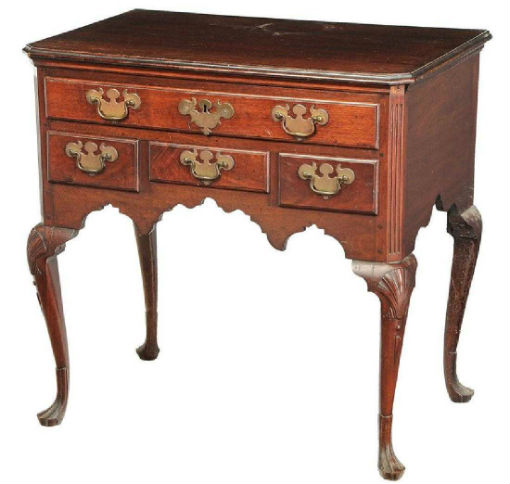
William Hogarth’s 1753 Analysis of Beauty, in which the serpentine curve (or S-curve) was evaluated at length, made a huge impact on the adoption of the cabriole leg in the Queen Anne taste, Jozefowicz said. “These legs typically terminated in a pad foot, slipper foot, trifid foot, or, toward the end of the period (as Chippendale/Rococo gained in favor), the ball and claw foot. One would also expect to see examples of shell carvings, broken arches and vase-form splats.”
Economically, as the British merchant class became able to afford finer furniture and decoration (instead of plain and utilitarian pieces), many more examples were produced. These Queen Anne objects were some of the first to be both decorative and widely distributed to the populace. They made their way to the Americas with Colonial immigration. Many were recreated in the Colonies with unique vernaculars. By descent, they’re often the period pieces we see on the market today.
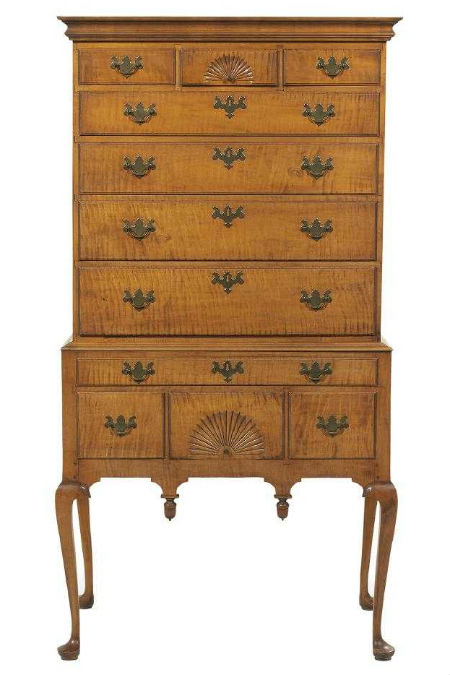
Moving into the future, Jozefowicz predicted, “the understated elegance characterized in late English Baroque furnishings will surely have its highs and lows. I believe the best period pieces will be more highly valued in good market times, followed perhaps by lesser decorated, restored, and nonperiod examples. I believe in times of economic or political uncertainty we’ll see a push toward the more heavily carved and gilt Continental styles, such as those of Louis XIV – XVI.”
John Nye of Nye & Co. Auctioneers in Bloomfield, N.J., said the William & Mary period was “epitomized by rectilinear qualities and the use of elaborate veneers, while vertical members were often turned. The appeal of the Queen Anne movement demonstrates how the pendulum of fashion swung back the other direction and incorporated a more sinuous, fluid design. Queen Anne furniture rarely used veneers and was ornamented by the grain of the selected woods.”
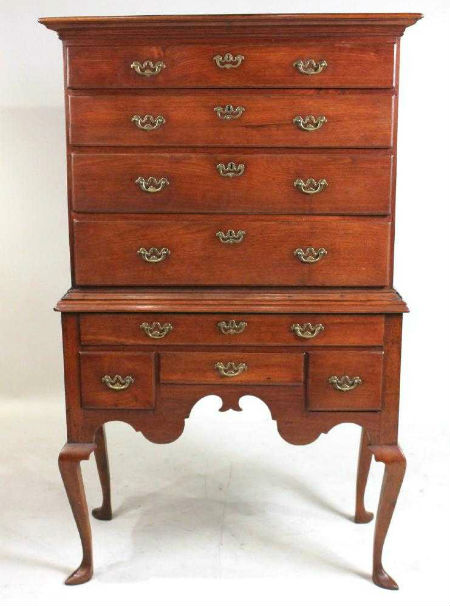
Nye continued, “The backs of the chairs produced in the Queen Anne period employed a cyma curve, making them ergonomic in design and more comfortable. Paraphrasing William Hogarth, the cyma curve represents the ‘line of beauty’ exciting the viewer with its inherent sense of movement. The paucity of ornament and simplicity of design has timeless appeal.”
Regarding today’s market for Queen Anne furniture, “Prices for the best examples of the Queen Anne period remain strong but tend to drop precipitously when condition issues are present. The market may be solidifying a bit in the last few years, but the overall lack of demand keeps prices on the low side, producing a buyer’s market for beautiful objects. Now is a good time to buy.”


